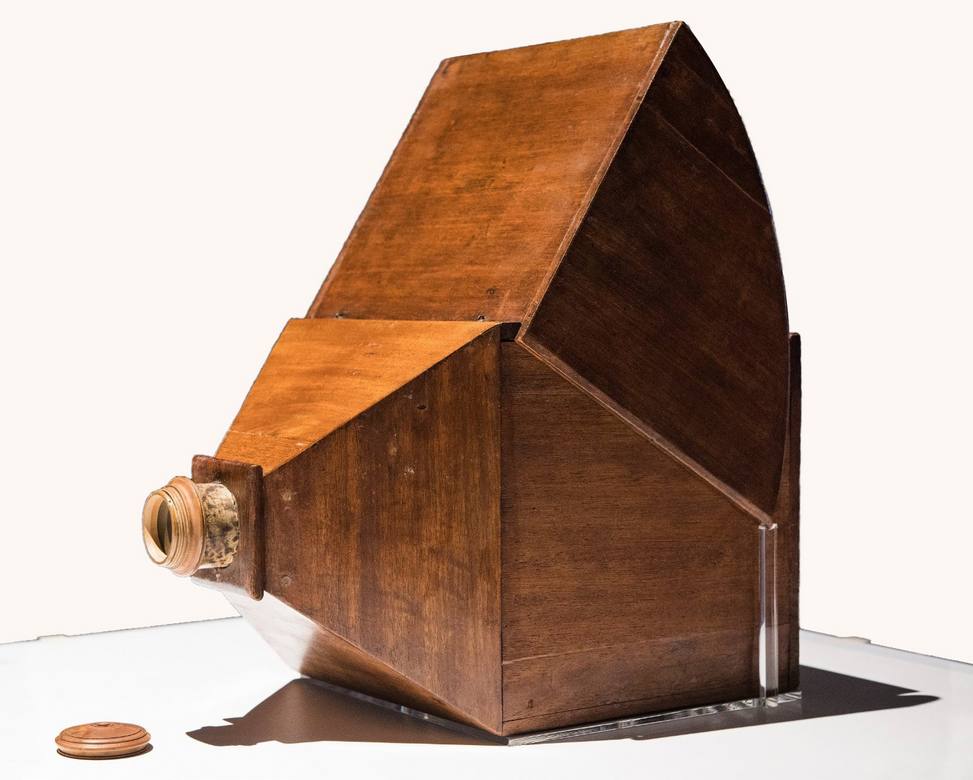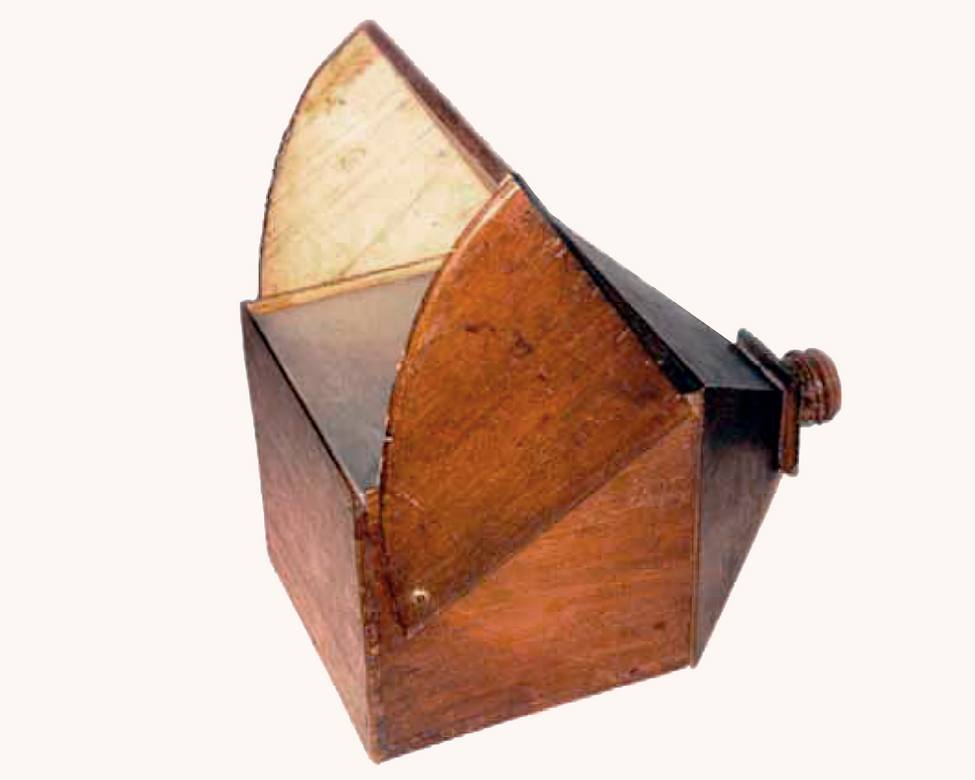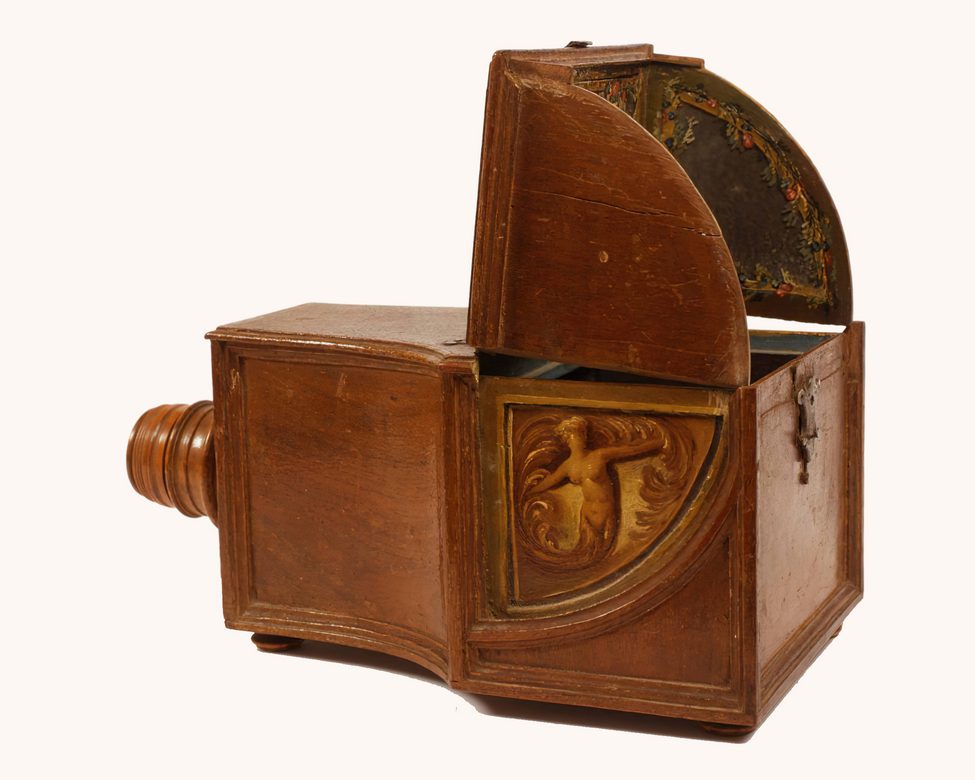
Camera Obscura ??
Did Canaletto really use it? And in which way?
I would like to use here my experience as an old-time photographer to try to figure out the way Canaletto could have been putting together his ideas into a painting.
This is the process I use when I want to photograph a scenery, outdoors, anyway:
1 - I visually evaluate the potential subject, camera in its bag,
2 - make a first framing in my head,
3 - I use what I call “my zoom” (legs and feet) to reach the framing and perspective just the way I want it,
4 - I visually work to recognize/avoid/hide in my mental framing the elements that can create disturbance and which I feel won’t fit in my “photograph”. When you shoot an architectural photo, you can’t delete certain objects which disturb your visual idea (poles, advertising panels, electric cables, cars, etc.). In real-life photography you can’t just brush them over with some brush-stroke (although you can do it later in with Photoshop, but this is a whole different story).
5 - when I am finally satisfied, I reach in my bag, get the camera, do all the electronics & mechanic “voodoo” on lens and camera,
re-create in the camera viewfinder/monitor the chosen framing and click!! ... and I’m done: next one, please.
Was Canaletto using this sort of method?
I have the impression he was: he was using his sensibility and his eyes/brain setup to get the idea in his mind for his "perfect" picture.
But in creating an image of Venice, in general terms, you don’t have much to choose, talking about framing, as you can’t move much from certain positions, or it may become a Capriccio, or something “that just doesn’t look right”, or you may fall headfirst in a canal.
Canaletto had always been walking the thin line about reproducing reality that everybody could see, and creating “his own reality”, and had been using (being his painting method quite maniacal) so much of the real elements to make a marvelous painting, in which you may find reality + human stories (staffing?) + a personal interpretation of the portrayed landscape situation.
And the maniacal/photographic precision with which he was creating his paintings has raised - in the last 3 centuries - several voices from scholars of Canaletto’s art, joining into a unanimous opinion movement, stating:
“… of course Canaletto was able to do such incredible paintings, because he was making them with the CAMERA OBSCURA!
How could he not, it was the painters’ tool of the times!”
My photographer opinion about
Canaletto using the Camera Obscura
I am taking advantage of my 15 years of professional view-camera work (4x5" and 5x7") in my studio and on location (plus other 15 years of 35mm and medium format photographer work) to offer my own analysis of the way Canaletto was putting together his paintings/ideas.
Canaletto for sure did not need to use a Camera Obscura to get things right, he had enough skills to provide more than what was needed to make his paintings and drawings.
Just giving a look to his drawings (no Camera Obscura here for sure!) we can see that.
But he may have used it to:
- evaluate certain visual situations
- elaborate details framing
- get fast moving ambiance elements (people, boats)
-
give a boost to his studio production, why not.
But only if he had used a tent-type Camera Obscura (which does not flip left-right the image it shows) he could have correctly reproduced the details of the buildings he would later paint and made his work easier and faster. Production.
What is known as the "Cagnola quaderno di schizzi" (Cagnola sketchbook) is where very likely he was jutting all the needed information to prepare the paintings work, this is widely renown.
Where all the "Camera Obscura theory" started
A.M. Zanetti the younger is very frequently referred as "Canaletto's biographer", and in the two pages he dedicated to Canaletto in his 1771 book "Della pittura veneziana e delle opere pubbliche de' veneziani maestri" (About Venetian painting and public works of the Venetian Masters), he suggests that Canaletto was making use of a Camera Obscura to create his views, but at the same time that this could create wrong impressions in the paintings:
"Insegnò il Canal con l'esempio il vero uso della camera ottica;
e a conoscere i difetti che recar suole a una pittura,
quando l'artefice interamente si fida della prospettiva
che in essa camera vede,
e delle tinte spezialmente delle arie
e non sa levar destramente
quanto può offendere il senso.
Il Professore m'intenderà."
"Taught Canaletto with his example the real use of the optical camera; and to understand the defects which it gives to a painting,
when the artist trusts the perspective which he sees in the camera,
and trusts the colors of special situations and is not able
to deftly take out what could be offensive to the senses.
The Professor will understand me."


The Camera Obscura supposedly owned by Canaletto - Museo Correr, Venezia
In the XVII and XVIII century it was a must-have for painters - but there is no demonstrated use of it in Canaletto's paintings, quite the opposite


The Camera Obscura supposedly owned by Canaletto - back view - Museo Correr, Venezia
We see here the ground glass where the image presents itself (flipped right/left!) to the user
![Courtesy of Dario Maran: [2012] - View of the Campanile di San Marco from the Museo Correr - from 'Attualità della Geometria Descrittiva', page 161 - Museo Correr, Venezia - left- regular camera / right- what we see on Canaletto's Camera Obscura ground glass](../images_db/Camera-Obscura--x004-dario-maran_161_b-gp.jpg)

Courtesy of Dario Maran: [2012] - View of the Campanile di San Marco from the Museo Correr - from 'Attualità della Geometria Descrittiva', page 161 - Museo Correr, Venezia
left- regular camera / right- what we see on Canaletto's Camera Obscura ground glass
![Anton Maria Zanetti: [1771] - Della Pittura Veneziana e delle Opere Pubbliche de' Veneziani Maestri - Libri V.', pages 462-463 - Canaletto so called 'biographer' in the two pages Zanetti dedicates to him and his oeuvre in the book](../images_db/Camera-Obscura--x003a-anton-maria-zanetti-pittura-veneziana-full_u.jpg)

Anton Maria Zanetti: [1771] - Della Pittura Veneziana e delle Opere Pubbliche de' Veneziani Maestri - Libri V.', pages 462-463
Canaletto so called 'biographer' in the two pages Zanetti dedicates to him and his oeuvre in the book
![Gianfrancesco Costa: [1750-56] - Veduta del Canale verso la Chiesa della Mira - Detail of Camera Obscura users - probably 1750-56](../images_db/Gianfrancesco-Costa-1762--x018b-camera-obscura-1750-56_01_det1.jpg)

Gianfrancesco Costa: [1750-56] - Veduta del Canale verso la Chiesa della Mira
Detail of Camera Obscura users - probably 1750-56

